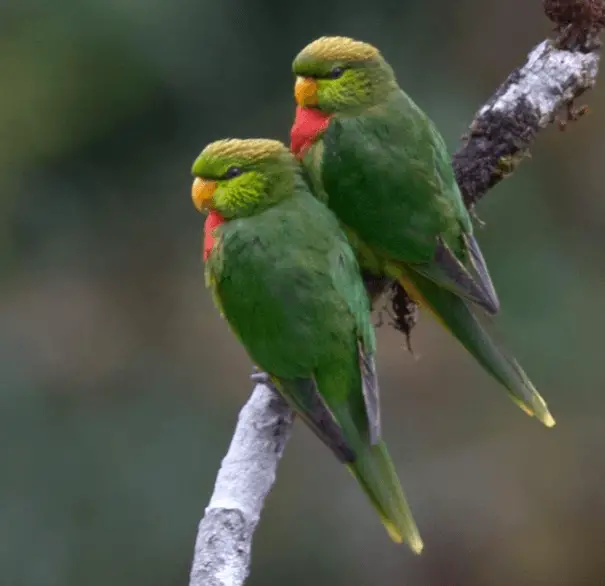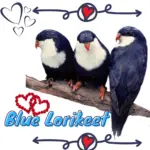
Systematics History
Editor’s Note: This article requires further editing work to merge existing content into the appropriate Subspecies sections. Please bear with us while this update takes place.
Yellow-billed Lorikeets from W & C New Guinea (Snow Mts E to Sepik R region) are sometimes awarded race medius, but better treated within major. Two subspecies were recognized.
Subspecies
Neopsittacus musschenbroekii musschenbroekii Scientific name definitions
Distribution
Neopsittacus musschenbroekii major Scientific name definitions
Distribution
Distribution
Editor’s Note: Additional distribution information for this taxon can be found in the ‘Subspecies’ article above. In the future, we will develop a range-wide distribution article.
Habitat
Mid-montane (e.g. Nothofagus-Podocarpus) forest, edge, secondary growth, and clearings, chiefly 1560–2660 m; seem to prefer disturbed areas and groves of casuarinas in garden areas.

Diet and Foraging
Yellow-billed Lorikeet eats Schefflera fruits were recorded, also other fruits, berries, small hard seeds, caterpillars, and lerps; also flowers of tall eucalypts and of weeds at ground level.
Sounds and Vocal Behavior
Quite vocal. Mainly high-pitched shrill notes such as “tseet!” (also heard in flight) and similar-sounding more modulated variations. Also a double-note “tsee-chew” and chattering “chi-chi-chi-chi”.
Breeding
Sept–Jan on a circumstantial basis; however, evidence for around Jun, with a juvenile and post-breeding male in late Aug. Yellow-billed Lorikeet Nest reportedly in a hole in the tree, with two eggs (two eggs in captivity).
Conservation Status
Not globally threatened. CITES II. Common; one of few mid-montane birds to have profited from human clearance of forest, being numerous in cleared areas around villages.




















